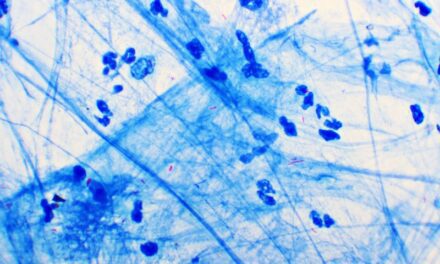This is a companion article to “The Toxin Trouble with C. difficile.”
The Singulex technology couples proprietary digital single molecule counting technology with robust microparticle-based immunoassays to provide higher sensitivity and broader dynamic range than contemporary immunoassay systems.
A biological sample containing the analyte of interest is combined with paramagnetic microparticles coated with capture antibodies and detection antibodies labeled with fluorescent dye. After a brief incubation, the microparticles are washed to remove any excess detection antibody and then subjected to conditions that disrupt the sandwich complex formed on the microparticles. The resulting eluate, which contains the fluorescently labeled detection antibodies, is separated from the microparticles and analyzed using single molecule counting technology. Single fluorescently labeled molecules that pass through a small interrogation space created by a confocal detection system generate intense flashes of light as they are illuminated by a laser.

Figure 6. The Singulex Clarity system is a fully automated, in vitro diagnostics platform powered by the company’s single molecule counting technology. The system has received the CE mark for use with the company’s cardiac troponin I assay.
The confocal microscopic optics utilized in single molecule counting technology rotate and scan through the bottom of a detection vessel. The intensity of fluorescence encountered in the interrogation space is captured as a function of time. The measured fluorescence is sequestered in 100 microsecond time bins.
A threshold of signal intensity is applied across all time bins and only bins with fluorescence above the threshold are counted as detected digital events. Each of these counted digital events represents a single fluorescently labeled molecule. The sum of digital events is equivalent to the concentration of analyte in the original biological sample. The single molecule counting technology provides a reading range of up to six logs.
The Singulex Clarity system is a fully automated, in vitro diagnostics platform powered by the company’s single molecule counting technology. Full automation, ready-to-use reagents, and onboard resource inventory management provide a streamlined sample-in, result-out workflow to optimize laboratory operations. The system, together with a cardiac troponin I assay, is CE marked in the European Union.
The Singulex Clarity C. diff toxins A/B assay (currently in development for use on the Singulex Clarity system) detects free C. difficile toxins A and B in stool. In collaboration with Stanford University and TriCore Laboratories, studies using the Clarity assay were presented earlier this year at the annual meetings of the European Congress of Clinical Microbiology and Infectious Diseases and the American Society for Microbiology. The study findings demonstrate that the ultrasensitive Singulex Clarity C. diff toxins A/B assay offers rapid results and a high level of sensitivity and specificity for the detection of C. difficile toxins A and B compared with currently available testing options.




